Ten years is a noteworthy milestone for any series, but when that series teeters right on the line between hope and despair it makes that success all the more exciting. Danganronpa had humble beginnings back on the PSP, with players overseas gravitating to Let’s Plays and fan translations, but it has since grown into a multi-media franchise with an identity all its own.
So here we are with a compilation of (nearly) the whole series on Switch. Danganronpa Decadence brings three full visual novels worth of bloodbath fever, warped perceptions of luck, and more multi-colored maniacal bears than anyone should reasonably have to handle. These are fairly straight ports of the Anniversary Editions, with nothing added to their experiences. There is a summer getaway side game to dive into, though it’s hardly a dream vacation. Still, whether as a complete package or its individual parts, the Danganronpa series is a welcome addition to the Switch library.
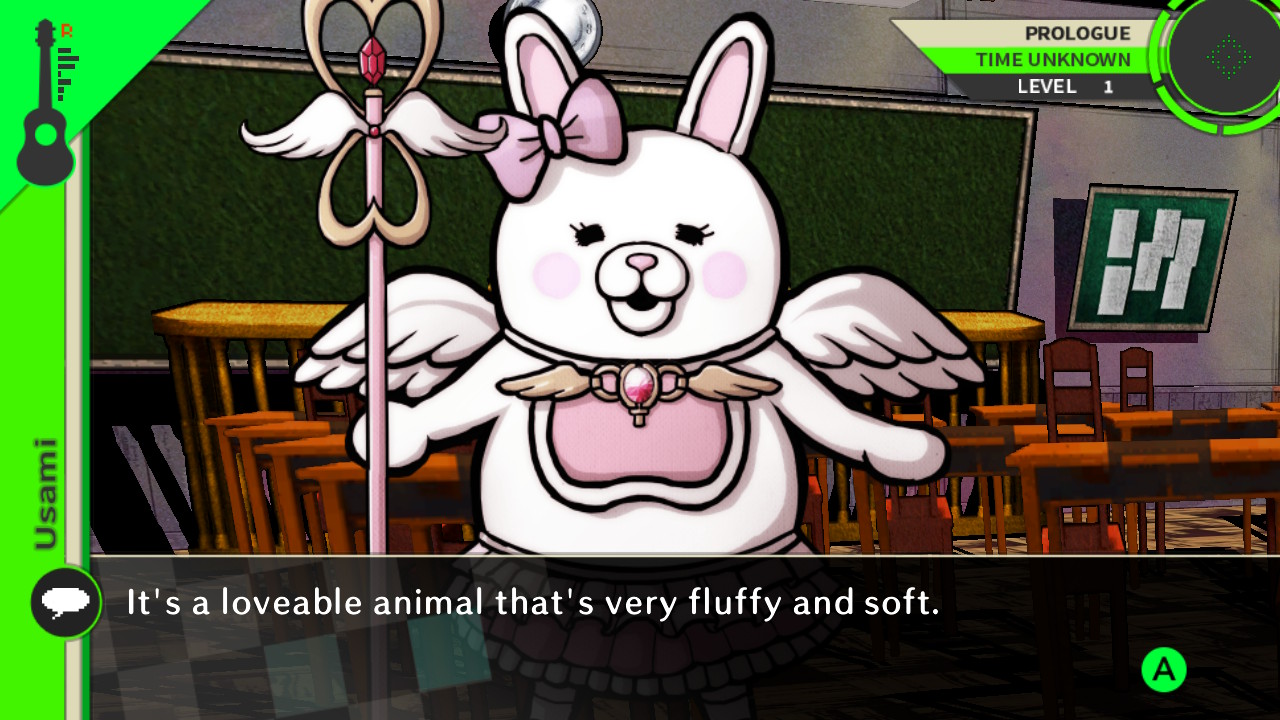
Each of the main Danganronpa titles is a self-contained narrative, with multiple mysteries to unravel alongside their cast of Ultimate characters. Even though they can all stand on their own, and each sequel improved on its predecessor, I would recommend starting with the original for a handful of reasons. I’d likely rank it as the least impressive of the three games, but it’s such a foundational piece, with motifs and expectations that feed into the rest of the series that you’d miss the subversions if you weren’t up to speed.
This is a difficult series to talk about with spoilers looming over any narrative discussion, and in the interest of Nintendo fans who’ve never gotten a chance at them I’m going to tread vaguely and lightly. Each sees a group of high school students, all of them deemed a supreme talent in some specific skill or trait, trapped in a circumstance that forces them into a twisted survival game. If anyone is able to successfully murder someone else and get away with it, they’re free to go.
Standing in this blackened individual’s way is the main character’s investigative ability. You have an amount of time to investigate for clues and question other students before a Class Trial. Anyone familiar with the Ace Attorney series will find some common ground with this loop, but Danganronpa takes it in an even more exaggerated direction. Whether that’s a good thing or a bad thing will depend on your tastes, but I think the consistently and heavily stylized presentation goes a long way in elevating the experience.
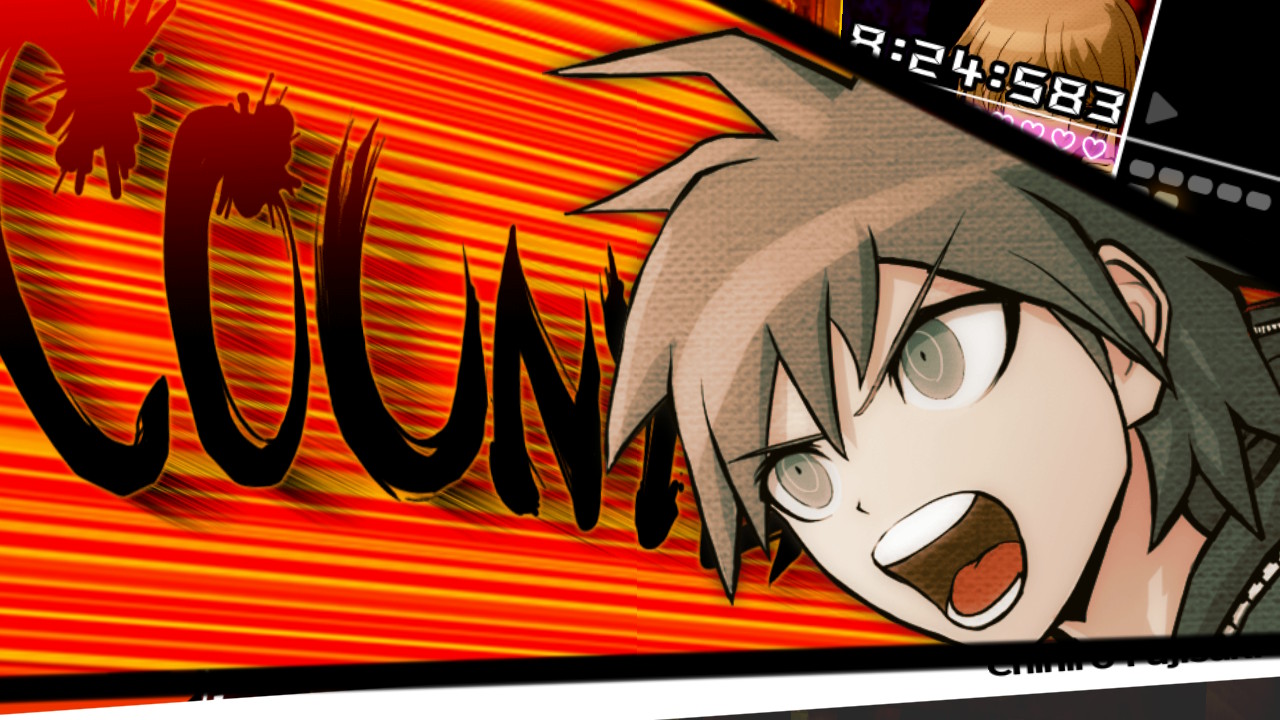
Yes, there are times you’ll simply be presenting evidence to your peers, but most of the deliberation (and the series’ name) comes from how you literally shoot bullets representing “truths” at others’ arguments. There are other means of gameplay and deduction that come up in trials that might be unique to a specific game, and are more hit and miss, but these Nonstop Debates are an inspired choice that remain consistent throughout. You might still find yourself in situations where the game’s logic isn’t quite as clear as it could be, or a trial seems to stretch on forever, but there’s rarely a chapter where Danganronpa isn’t successfully drawing you in.
It’s worth mentioning another trademark of the series here – executions. After every class trial, the individual found guilty is then put to death on the spot in a themed punishment connected to their talent. Again, no spoilers, but seeing these deranged reflections of the individuals unfold via cutscene is a demented sort of catharsis that the creators have nailed. Maybe that says something about me that I look forward to these so much in each of the games, but they serve well to both solidify the series’ tone and deliver some real gut punches once the more episodic nature of the trials gives way to the overarching plot.
While I mentioned each of the games can stand alone, I do want to emphasize that there are continuous narrative threads that carry across in release order. Individual games do fine enough on giving you the necessary information, but playing through is recommended if you’re new to the series. As great a collection as this is, it does leave off the side game Ultra Despair Girls and leaves you in the dark when it comes to various novels and anime that expand upon the series, so from a franchise wide perspective it isn’t comprehensive – just the best and core pieces.
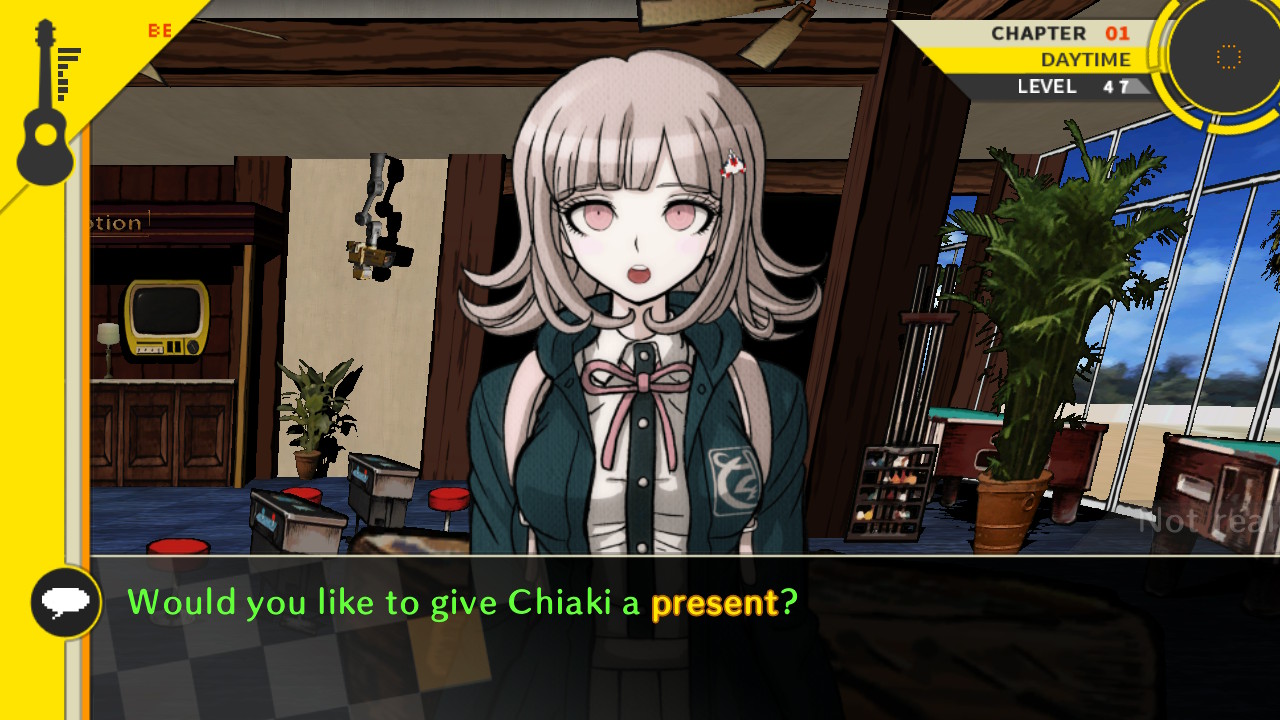
When you aren’t solving murders or progressing the core plot lines of a given game, you’ll be able to build up your relationships with classmates during Free Time segments. With so many conversations and characters, there’s a lot to sink your teeth into. It can be disheartening to see a friend you’d invested time and presents into suddenly wind up dead, but thankfully there’s always a side mode where you can engage in this social sim to your heart’s content without anyone gushing neon pink blood unexpectedly.
That duality is where Danganronpa gets its charm, as you’re encouraged to bond with the dozen-plus characters of a given title in your charming, youthful days while also navigating the serpentine descents into corpse city under the watchful and jagged eye of a two-tone bear. Add in the signature character designs and layered plots, plus a soundtrack that’s great in its own right but also utilized to best serve the experience via motifs and cues, and you have standout examples of this genre. Each of the games has their strengths, some of which I’ll dive into next, but as a full collection you cannot go wrong with Danganronpa Decadence.
Danganronpa: Trigger Happy Havoc
The decade old, PSP original is perhaps the most essential title in this whole set but of the main entries it’s aged the most poorly. Its plot is just fine and its cast laid the template on what to expect from these ensembles, but some of the individual trials don’t have the same cleverness that later entries would nail. Likewise its visuals and original script could’ve used a touch up, not necessarily for any shortcomings but just for greater consistency with the later two.
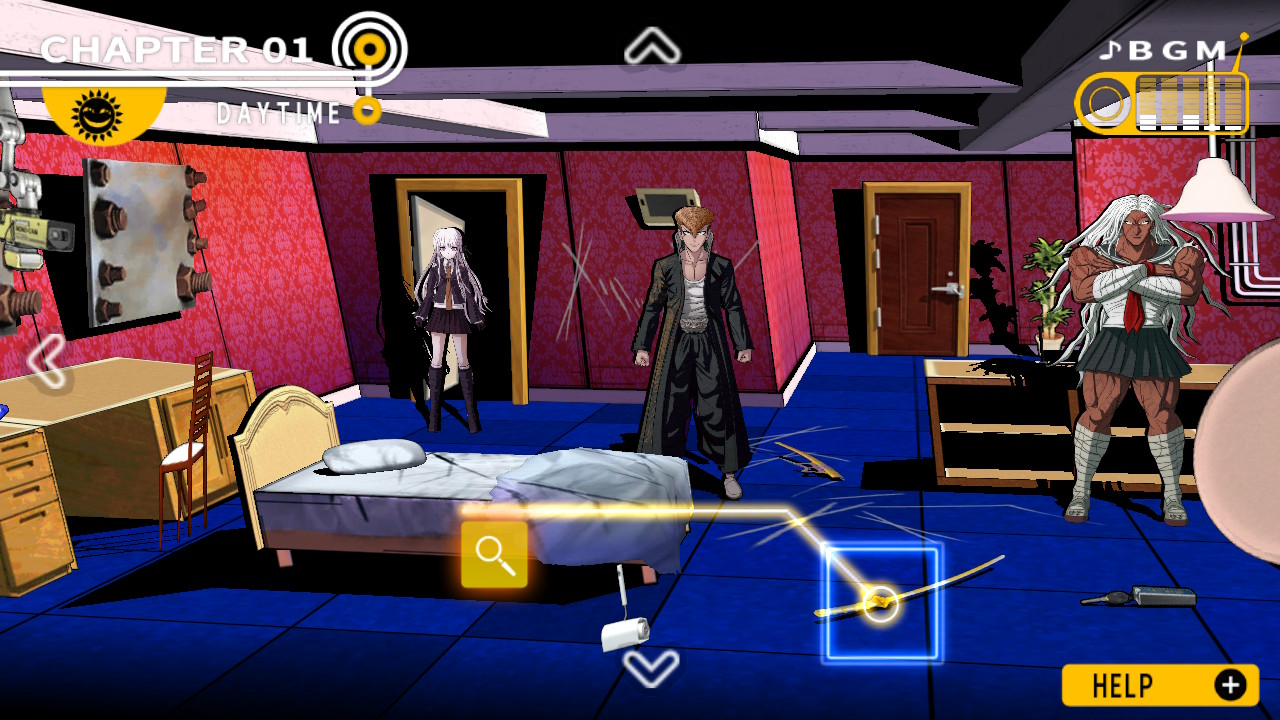
Still, there’s a charm to the more simplified scale of the first title and it’s the one most focused on Hope’s Peak Academy itself. Makoto Naegi endears himself as the series’ original protagonist, and the rest of the class lean less on their talents and more on their quirky personalities. If you can overlook a few blemishes and appreciate having the fullest possible understanding of the series, then this is your starting point for sure.
Danganronpa 2: Goodbye Despair
Danganronpa 2 improves on a lot of what made the first game a cult hit in the first place, with perhaps the best singular plot of the three. Its trials also hit more consistently, and as mentioned it is best gone into after experiencing the first game. More than the third game there are parallels with particular chapters that benefit from knowledge of the first’s murders and broader plot ideas. That said the scale has grown here, putting the cast on a tropical island rather than a school and bringing in some higher concepts and more out there ideas – which is really saying something when put beside its predecessor.
This one might be personal preference talking, but 2 might also have my favorite overall cast. There are a few standouts that rank even among my favorite characters period, like the recurring Nagito Komaeda or sleepy gamer Chiaki Nanami, but as a group they feel mostly more fleshed out and interesting. In some ways it gives the impression of the first game’s student body being a rough draft that the sequel improved on, but it makes this a harder standalone sell than the original. Still, if you want the most solid, all-around entry possible it could be Goodbye Despair.
Danganronpa V3: Killing Harmony
If Danganronpa 2 was the series getting comfortable, Danganronpa V3: Killing Harmony is where it realizes it can cut loose. Between the fact this is the latest game and the only one not originally developed for the PSP, it’s definitely got some notable improvements on the presentation. Likewise its core story goes even more subversive and out there, to the point you might think the creators are getting a little meta about it all. Regardless, it works, though I can see some fans being put off by just how hard it leans into ideas that don’t feel “as” Danganronpa as those that made their way into Goodbye Despair or Trigger Happy Havoc.
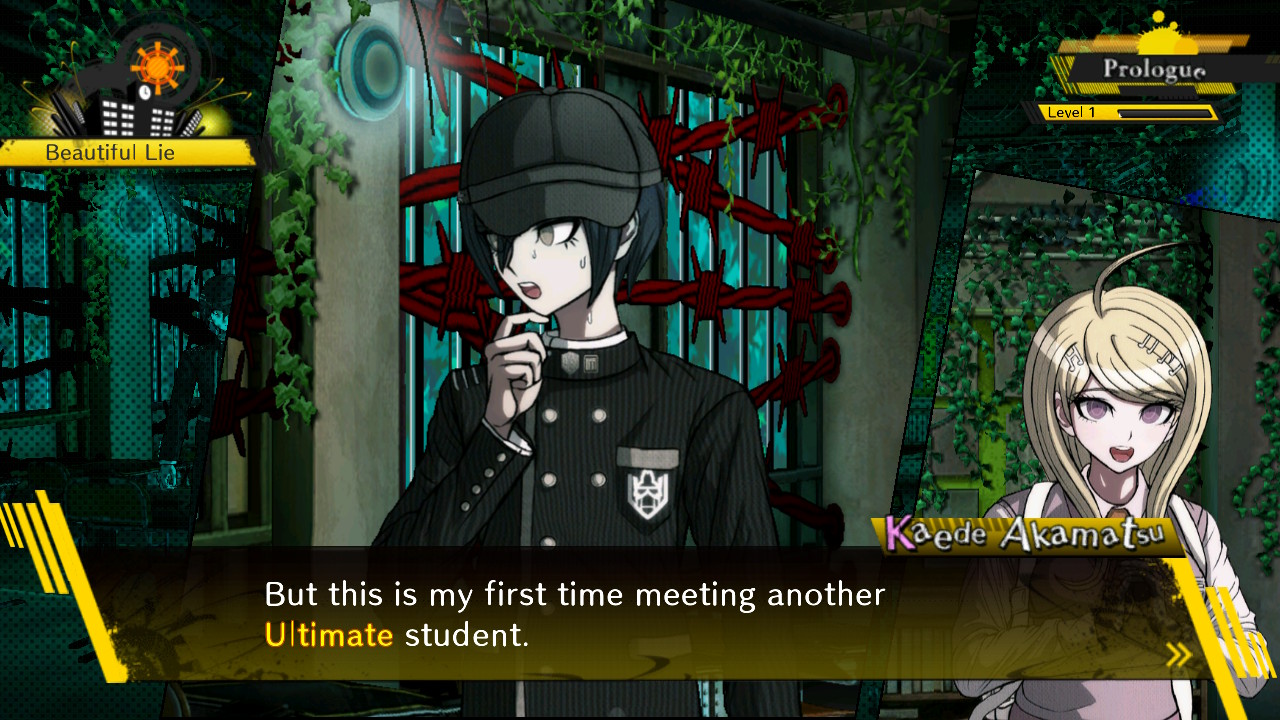
While I mentioned that the second game was my favorite overall cast, Killing Harmony is no slouch. Kokichi Oma in particular left a strong impression, keeping many of the trials (which get even more complex in the best of ways) more harrowing affairs. It’s not perfect – no single game among these three nails everything – but V3 manages to edge out 2 to be my personal favorite in the series.
Danganronpa S: Ultimate Summer Camp
So here we are at the only “new” piece of this collection. New is being generous, though. While it’s got some new art and character interactions that crossover the three games’ characters (and those from Ultra Despair Girls) it plays as an expanded version of one of V3’s side games. This character development (stats, not their actual character) board game has been expanded but that doesn’t necessarily make it exciting.
For one, the board game portion itself is a repetitive affair used to level up “cards” of each character. With the amount of characters here, and each of them having four cards, the amount of grinding that would go into developing them all is staggering. It simply isn’t engaging, instead serving as a timewaster to fuel another timewaster – a barebones gauntlet of turn based RPG battles. Yes, there are some lines and interactions that got a smile out of me, but it all feels surface level and fanservicey.
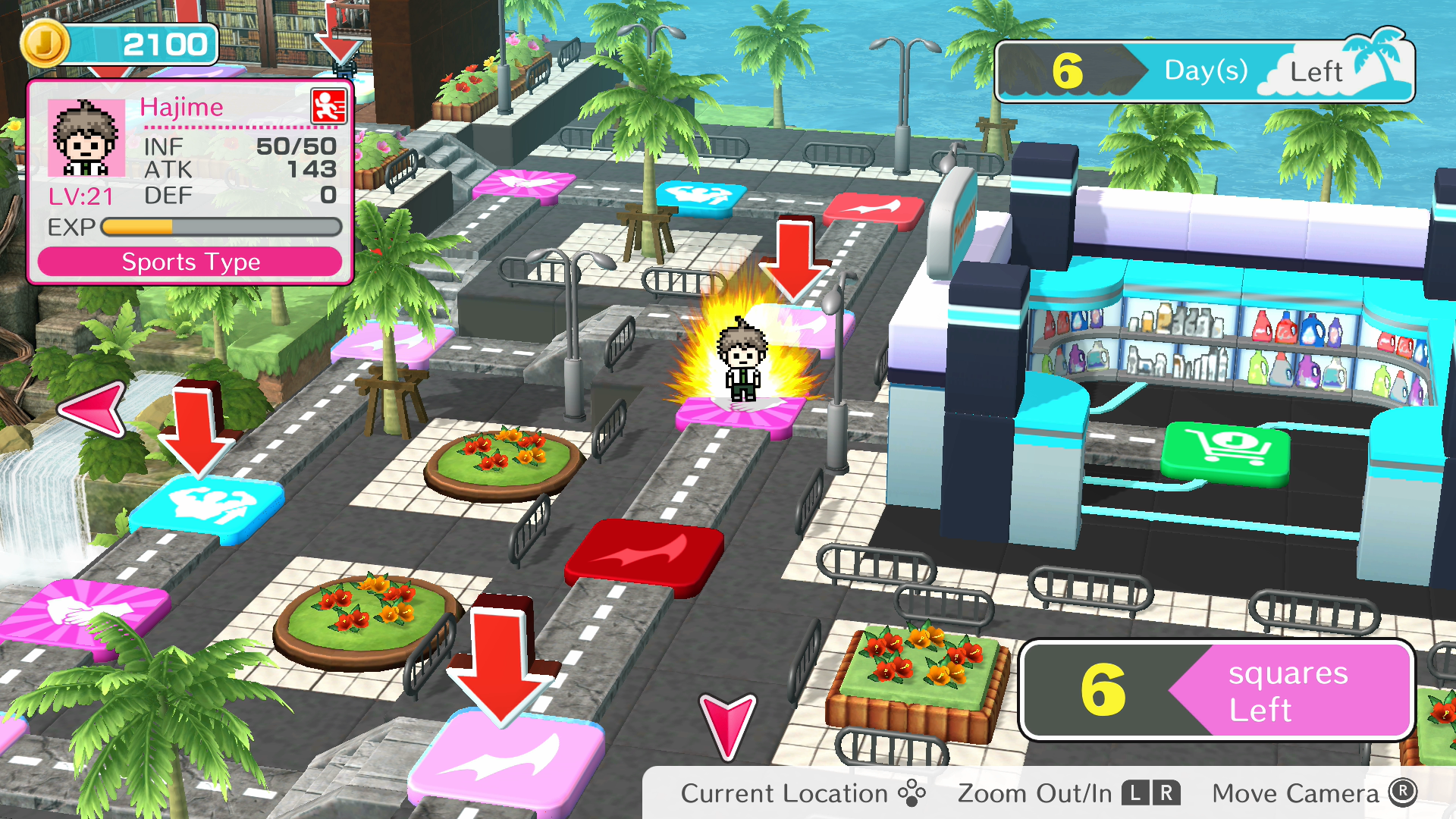
The most egregious aspect of Ultimate Summer Camp is easily its gacha mechanics. While each title has had a random vending machine present for collectibles/gifts in the relationship mode, this one goes full gacha in how you unlock characters. You’ll start with the lowest level cards of the series’ protagonists before you funnel coins in the hopes of getting favorites. Giving players the option to outright buy their favorites with real people money instead of leaving it to luck makes it even clearer that this is more a money-grabbing distraction than an engaging dream game.
Even with those shortcomings for the new addition, I’d still recommend Danganronpa Decadence just on the strength of the series itself. If you’ve ever been curious and passed on their PS Vita debuts outside of Japan, I’d encourage grabbing at least one of the main entries to see what makes them so beloved by their fans. Hopefully whenever the next school year begins, the Switch will remain another home for all this delightful despair.
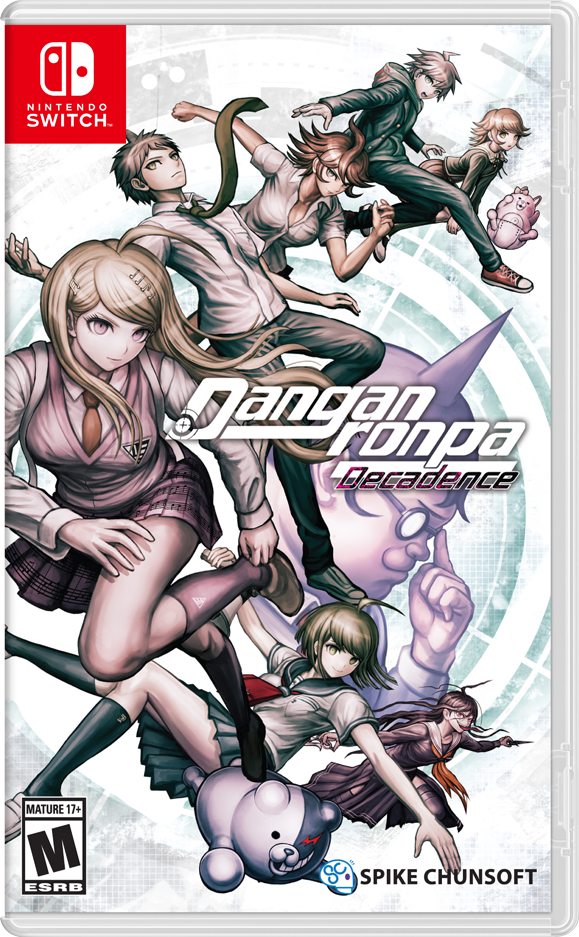
System: Nintendo Switch
Release Date: December 3, 2021
Categories: Visual Novel, Adventure, Mystery
Publisher: Spike Chunsoft
Developer: Spike Chunsoft


